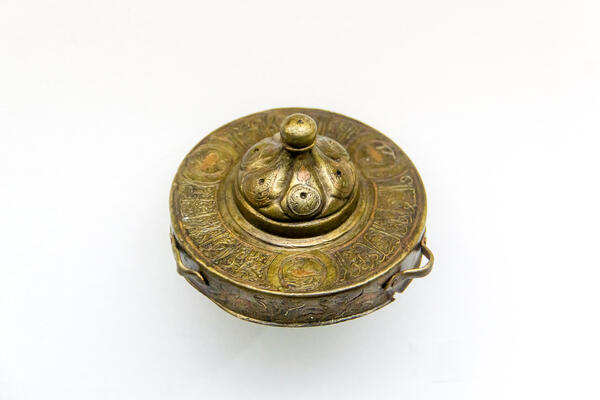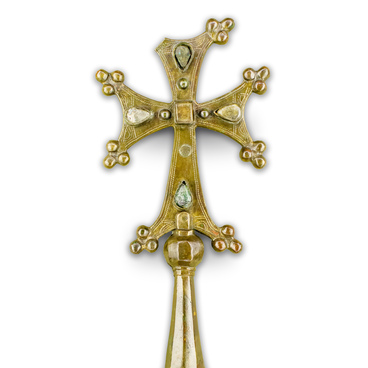Writing appeared in the Volga region in the 8th century. The first writing material was stone. By the beginning of the 2nd millennium, the ancestors of the modern Tatars had developed a high level of skill in stone-cutting: Volga Bulgarian gravestones were distinguished by the elegance and accuracy of the inscriptions. The later examples, the gravestones of the 13th-14th centuries, have been preserved to this day.
The Bulgars also wrote on waxed boards and birch bark. Symbols were scratched with special rods — bone scribes, like those used in ancient Russia. Each rod had a hole through which it was tied to the belt.
During the period of prosperity of Volga Bulgaria, people wrote on paper. The Bolgars traded with Samarkand, Baghdad, Bukhara, cities of India and China, and brought the new material from there.
On the territory of the vanished Volga Bulgaria archaeologists find the inkwells used for writing. The cheapest ones were made of clay, the more expensive ones — of bone and metal.
At the ‘History of the Civilization of Volga Bolgars’ exhibition, there is a bronze inkwell with a lid. The exhibit is dated to the second half of the 13th century.
Bulgarian artisans made the inkwell in the form of a low, but wide cylinder. The vessel was covered by a lid with a hexahedral top. Two horizontal hinges made of copper plates were set on the handle sides.
The lid was encrusted with copper birds and mythical creatures. An inscription in Arabic was cast around the perimeter, ‘Everlasting glory and success, and power, and happiness, and health, and the mercy of Allah, and longevity to the possessor of this’. The words were inscribed in naskh, one of the traditional Arabic scripts. At that time the naskh replaced the older and more complex suls with many twists and turns. The naskh script is still used in many Arabic countries. It has also been adapted for the modern printed text.
In Volga Bulgaria, which was conquered by the Golden Horde at that time, an ornate inkwell was a symbol of its owner’s wealth. The intricate decorations were made in the style of Iranian artworks. During this period, a great variety of household items were imported from Iran.
The Bulgars also wrote on waxed boards and birch bark. Symbols were scratched with special rods — bone scribes, like those used in ancient Russia. Each rod had a hole through which it was tied to the belt.
During the period of prosperity of Volga Bulgaria, people wrote on paper. The Bolgars traded with Samarkand, Baghdad, Bukhara, cities of India and China, and brought the new material from there.
On the territory of the vanished Volga Bulgaria archaeologists find the inkwells used for writing. The cheapest ones were made of clay, the more expensive ones — of bone and metal.
At the ‘History of the Civilization of Volga Bolgars’ exhibition, there is a bronze inkwell with a lid. The exhibit is dated to the second half of the 13th century.
Bulgarian artisans made the inkwell in the form of a low, but wide cylinder. The vessel was covered by a lid with a hexahedral top. Two horizontal hinges made of copper plates were set on the handle sides.
The lid was encrusted with copper birds and mythical creatures. An inscription in Arabic was cast around the perimeter, ‘Everlasting glory and success, and power, and happiness, and health, and the mercy of Allah, and longevity to the possessor of this’. The words were inscribed in naskh, one of the traditional Arabic scripts. At that time the naskh replaced the older and more complex suls with many twists and turns. The naskh script is still used in many Arabic countries. It has also been adapted for the modern printed text.
In Volga Bulgaria, which was conquered by the Golden Horde at that time, an ornate inkwell was a symbol of its owner’s wealth. The intricate decorations were made in the style of Iranian artworks. During this period, a great variety of household items were imported from Iran.



